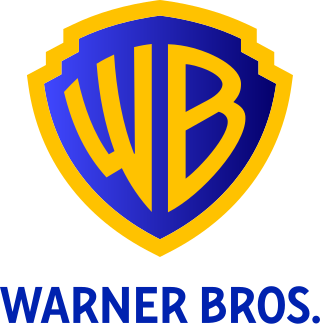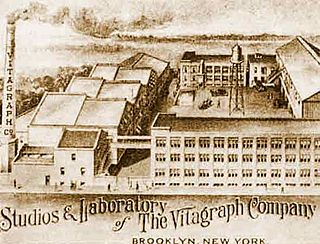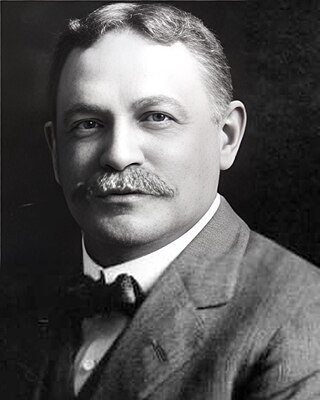A prestige picture is a film produced to bolster the film studio's perceived artistic integrity, rather than to turn a large profit; [1] the studio may even expect the film to lose money. [2]
Prestige pictures are largely the province of major Hollywood film studios — such as Metro-Goldwyn-Mayer and Warner Bros. — that produce numerous films every year.
In the 1930s, such studios might release one prestige picture per year. [2] The films' screenwriters drew material from historical events, well-known literary classics, or popular novels or plays. [3]
In many cases, Hollywood film studios have enlisted British actors and directors for the production of prestige films. [4] One producer of prestige pictures within the United Kingdom's own film industry was Alexander Korda (1893–1956). [5]
Recent examples of prestige films include Ad Astra , The Fabelmans , Armageddon Time , She Said , and Tár . In many cases, these films were greenlit despite being expected to make a loss.[ citation needed ]

Gladys Louise Smith, known professionally as Mary Pickford, was a Canadian-American film actress, producer, screenwriter and film studio founder. She was a pioneer in the American film industry, with a Hollywood career that spanned five decades.

Paramount Pictures Corporation, commonly known as Paramount Pictures or simply Paramount, is an American film production and distribution company and the namesake subsidiary of Paramount Global. It is the sixth-oldest film studio in the world, the second-oldest film studio in the United States, and the sole member of the "Big Five" film studios located within the city limits of Los Angeles.

Warner Bros. Entertainment Inc. is an American film and entertainment studio headquartered at the Warner Bros. Studios complex in Burbank, California, and a subsidiary of Warner Bros. Discovery (WBD). Founded in 1923 by four brothers, Harry, Albert, Sam, and Jack Warner, the company established itself as a leader in the American film industry before diversifying into animation, television, and video games, and is one of the "Big Five" major American film studios, as well as a member of the Motion Picture Association (MPA).

A sound film is a motion picture with synchronized sound, or sound technologically coupled to image, as opposed to a silent film. The first known public exhibition of projected sound films took place in Paris in 1900, but decades passed before sound motion pictures became commercially practical. Reliable synchronization was difficult to achieve with the early sound-on-disc systems, and amplification and recording quality were also inadequate. Innovations in sound-on-film led to the first commercial screening of short motion pictures using the technology, which took place in 1923. Before sound-on-film technology became viable, soundtracks for films were commonly played live with organs or pianos.

The Motion Picture Production Code was a set of industry guidelines for the self-censorship of content that was applied to most motion pictures released by major studios in the United States from 1934 to 1968. It is also popularly known as the Hays Code, after Will H. Hays, president of the Motion Picture Producers and Distributors of America (MPPDA) from 1922 to 1945. Under Hays's leadership, the MPPDA, later the Motion Picture Association of America (MPAA) and the Motion Picture Association (MPA), adopted the Production Code in 1930 and began rigidly enforcing it in 1934. The Production Code spelled out acceptable and unacceptable content for motion pictures produced for a public audience in the United States.

Universal City Studios LLC, doing business as Universal Pictures, is an American film production and distribution company that is a division of Universal Studios, Inc., which is owned by NBCUniversal, a division of Comcast.

Essanay Studios, officially the Essanay Film Manufacturing Company, was an early American motion picture studio. The studio was founded in 1907 in Chicago by George Kirke Spoor and Gilbert M. Anderson, originally as the Peerless Film Manufacturing Company, then as Essanay on August 10, 1907. Essanay is probably best known today for its series of Charlie Chaplin comedies produced in 1915-1916. In late 1916, it merged distribution with other studios and stopped issuing films in the fall of 1918. According to film historian Steve Massa, Essanay is one of the important early studios, with comedies as a particular strength. Founders Spoor and Anderson were subsequently awarded special Academy Awards for pioneering contributions to film.

Vitagraph Studios, also known as the Vitagraph Company of America, was a United States motion picture studio. It was founded by J. Stuart Blackton and Albert E. Smith in 1897 in Brooklyn, New York, as the American Vitagraph Company. By 1907, it was the most prolific American film production company, producing many famous silent films. It was bought by Warner Bros. in 1925.

The cinema of the United States, consisting mainly of major film studios along with some independent films, has had a large effect on the global film industry since the early 20th century.

Carl Laemmle was a German-American film producer and the co-founder and, until 1934, owner of Universal Pictures. He produced or worked on over 400 films.
The film industry or motion picture industry comprises the technological and commercial institutions of filmmaking, i.e., film production companies, film studios, cinematography, animation, film production, screenwriting, pre-production, post-production, film festivals, distribution, and actors. Though the expense involved in making films almost immediately led film production to concentrate under the auspices of standing production companies, advances in affordable filmmaking equipment, as well as an expansion of opportunities to acquire investment capital from outside the film industry itself, have allowed independent film production to evolve.
The National Legion of Decency, also known as the Catholic Legion of Decency, was a Catholic group founded in 1934 by the Archbishop of Cincinnati, John T. McNicholas, as an organization dedicated to identifying objectionable content in motion pictures on behalf of Catholic audiences. Members were asked to pledge to patronize only those motion pictures which did not "offend decency and Christian morality". The concept soon gained support from other churches.

William Nicholas Selig was a vaudeville performer and pioneer of the American motion picture industry. His stage billing as Colonel Selig would be used for the rest of his career, even as he moved into film production.

Twentieth Century Pictures, Inc. was an American independent Hollywood motion picture production company created in 1933 by Joseph Schenck and Darryl F. Zanuck from Warner Bros., and co-founded by William Goetz from Fox Studios, and Raymond Griffith. The company product was distributed theatrically under United Artists (UA), and leased space at Samuel Goldwyn Studios.
A studio system is a method of filmmaking wherein the production and distribution of films is dominated by a small number of large movie studios. It is most often used in reference to Hollywood motion picture studios during the early years of the Golden Age of Hollywood from 1927 to 1948, wherein studios produced films primarily on their own filmmaking lots with creative personnel under often long-term contract, and dominated exhibition through vertical integration, i.e., the ownership or effective control of distributors and exhibition, guaranteeing additional sales of films through manipulative booking techniques such as block booking.
Poverty Row is a slang term for small Hollywood studios that produced B movies from the 1920s to the 1950s, typically with much smaller budgets and lower production values than those of the major studios. Although many of these studios were based in the vicinity of Gower Street in Hollywood, the term does not necessarily relate to any specific physical location.

Triangle Film Corporation was a major American motion-picture studio, founded in July 1915 in Culver City, California and terminated 7 years later in 1922.

Film Booking Offices of America (FBO), registered as FBO Pictures Corp., was an American film studio of the silent era, a midsize producer and distributor of mostly low-budget films. The business began in 1918 as Robertson-Cole, an Anglo-American import-export company. Robertson-Cole began distributing films in the United States that December and opened a Los Angeles production facility in 1920. Late that year, R-C entered into a working relationship with East Coast financier Joseph P. Kennedy. A business reorganization in 1922 led to its assumption of the FBO name, first for all its distribution operations and ultimately for its own productions as well. Through Kennedy, the studio contracted with Western leading man Fred Thomson, who grew by 1925 into one of Hollywood's most popular stars. Thomson was just one of several silent screen cowboys with whom FBO became identified.

RKO Radio Pictures Inc., commonly known as RKO Pictures or simply RKO, was an American film production and distribution company, one of the "Big Five" film studios of Hollywood's Golden Age. The business was formed after the Keith-Albee-Orpheum theater chain and Joseph P. Kennedy's Film Booking Offices of America studio were brought together under the control of the Radio Corporation of America (RCA) in October 1928. RCA executive David Sarnoff engineered the merger to create a market for the company's sound-on-film technology, RCA Photophone, and in early 1929 production began under the RKO name. Two years later, another Kennedy concern, the Pathé studio, was folded into the operation. By the mid-1940s, RKO was controlled by investor Floyd Odlum.

Warner Bros. Pictures is an American film production and distribution company of the Warner Bros. Motion Picture Group division of Warner Bros. Entertainment. The studio is the flagship producer of live-action feature films within the Warner Bros. Motion Picture Group unit, and is based at the Warner Bros. Studios complex in Burbank, California. Animated films produced by Warner Bros. Pictures Animation are also released under the studio banner.